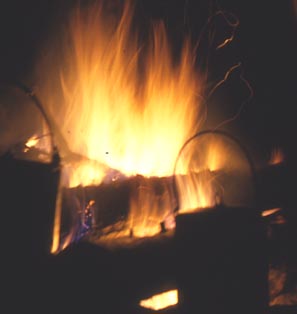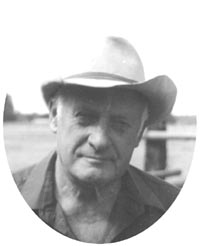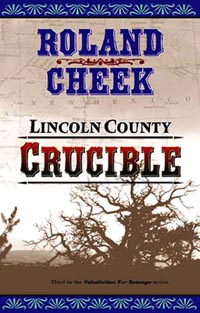a weblog sharing info on outdoor skills and campfire musing by a guy who spends a bunch of time in pursuit of both
CULTURE
WHERE -
TALES ARE TOLD OF
Welcome to Roland Cheek's Weblog
Roland is a gifted writer with a knack for clarifying reality. Looking forward to more of his wisdom
- Carl Hanner e-mail
Lost yesterday, somewhere between a babe's awakening and an old man's sunset, the art of conversation; the exchange of ideas, thoughts, insights, dreams. Conversation's decline began with the insidious rise of television's invasive presence, severing the bonds of family evenings. The demise continued through an expanded plethora of mindless individual activity-demands requiring every family member to speed to different compass points all day every day. The result, of course is to spit out adults who are conversationally retarded, resembling zombies, with or without the glaring eye of a 50-inch flat screen TV and endless DVDs.
To access Roland's weblog and column archives
Tip o' the Day
Each of us owned a spotting scope; each stood on the rear bumper of my Jeep station wagon eyes pressed to scopes perched on tripods atop the wagon. We systematically glassed a mountainside some distance away. Ostensibly, we were looking for grizzly bears, but we each would be pleased to eye elk or deer, or even most others of God's creatures. Suddenly, the Jeep began shaking. "My God!" Jim exclaimed. "He's huge!"
"What? Where?" I cried. My friend leaped to the ground spluttering (apparently he'd swallowed his snoose). He pointed to the mountain, as if a vague wave at a distant mountainside offered everything I needed to know.
"Godammit! What did you see?"
"A grizzly!" he managed to get out between retchings. "A huge grizzly! Swaggering up through that meadow!"
That meadow was actually one of a dozen meadows on that mountain. But it was enough direction so that by the time Jim had heaved out his guts, I had his grizzly bear in my scope. "He is big," I murmured.
"Where is he?" he asked, at last clambering back up to peer through his scope.
"Find your own grizzly," I chuckled.
* * *
Mark your spot is a cardinal rule in wildlife watching. Find your animal, then excitement be damned! stay with it long enough to spot some unusual feature in nearby surroundings; something you can easily return to without fail. All too often, wildlife will be spotted, then in excitement, the viewer will turn away to call to someone else, then be unable to again find the animal.
"Mark the spot. Mark the spot." It's a refrain I've tried to hammer into the heads of guides, wife, kids, and fellow-travelers. That's why I was so distressed when Jane spotted our first wolves while I was comfortable ensconced in an outhouse at the Many Glacier picnic area.
It was early April and I had to wade through snowdrifts to get to the outhouse. I wasn't about to leave hurriedly. But when she gave a strange, choked-up cry, "Roland, come quick! I see two wolves!" I was out that outhouse door, running through snowdrifts with my trousers down around the knees, crying, "Where? Where?"
She still held my Zeiss binoculars to her eyes, but a red blush was stealing from her jacket collar up her face. "I . . . I don't know. I lost them."
"YOU WHAT?"
"They were right up there. Trotting across the hillside. They were dark. I know how badly you've wanted to see a wolf. I just took my eyes off them for a second to call you. I'm sorry." Tears were in her eyes.
Divorce isn't an option, considering our age and the years we've been in love, so the only thing left for me to do was find the wolves without help.
We're still together.
No, Roland Cheek hasn't been in a gunfight at the O.K. Corral or punched dogies down the streets of Abilene. But he has straddled rawboned ponies over 35 thousand miles of the toughest trails in all the Northern Rockies and spent five decades wandering the wild country throughout the West. Now, after crafting six prior nonfiction books, hundreds of magazine articles, and thousands of newspaper columns and radio scripts about his adventures, the guy has at last turned his talent to Western novels, tales from the heart, dripping with realism, and based in part on a plethora of his own experiences.
* * *
NEZ PERCE / ADVANCED GENETIC ENGINEERS
If I promise to shy away from test tube babies, cloning, or breed development to produce more porterhouse steaks, will you allow me to venture into genetic engineering? What I'm really pointing at is dogs and horses -- the two collision-cultures of the American Indian.
What started me thinking about this subject was wondering if Indian packdogs were developed from wolves? Yeah, it's widely accepted that all of today's dogs originated from common ancestry with the wolf, although it takes a quantum leap of faith to believe a Chihuahua or wiener-dog has any commonality with a wolfpack srung out over the Arctic tundra.
Indian dogs were not so far removed from wolves, however. But they were domesticated, which must've been the first Native American trick of genetic engineering. Before the horse (relatively recent) Plains Indians used dogs for packing big loads and dragging heavy travois, so their dogs were selectively bread for size. Then came horses to upstage the dog and reduce his role to sentry duty and the occasional stewpot supplement. Not only could a horse take the place of eight to ten dogs when it came time to move camp, but the pony didn't compete for food with his master, prefering bunchgrass to spareribs. Also, the brave could ride the horse to war, and on the buffalo hunt! Infatuation became total. Thereafter, Native American genetic engineering became solely devoted to the horse.
How much so?
Well, I've always been intrigued with the appaloosa. Most everyone knows and accepts that appaloosa horses were developed by the Nez Perce Indians. But nobody knows how they did it. We've all read of Chief Joseph and the desperate attempt of his people to flee to Canada across the Bitterroot Mountains between Idaho and Montana, through Yellowstone National Park and Northern Wyoming, through Central Montana, eluding three different U.S. Army detachments trying to corner them, until his band's final defeat almost within sight of the Canadian Line. We know how they fled for over a thousand miles and how, outnumbered and out-armed, they fought pursuing U.S. Army Commands to a standstill. But it's only while reading the details of this tale when we learn that the Nez Perce's relatively unknown special breed of spotted horses carried them on their journey.
All America became intrigued by these tough mountain ponies that stayed fat on the scant grass they could only pick up on the trail, were docile to handle, and proved tireless on the trek.
The Nez Perce War was in 1877. Now consider this:
The Nez Perce could not possibly have acquired the horse until about 1750, traded upward from Commanche Indians of Texas through their distant relatives, the Utes of Colorado and Utah, who then traded upward to their distant relatives, the Nez Perce. Yet there was no word of appaloosa horses in the meticulous journals of Meriwether Lewis or William Clark during their two visits to Nez Perce country in 1805 and '06. Do you find it strange those two explorers saw no unusually spotted horses during those visits despite trading with the Tribe for dozens of ponies and reporting several large horse herds belonging to those Indians? How, then, was it that 70 years later the breed was fully developed? "
It's a question I've often asked of knowledgeable horse breeders and to a man (or woman) they say the feat would be impossible to duplicate in the same time frame today, despite our advanced understanding of genetic engineering, controlled breeding stations, and unlimited financial resources.
Don't you wonder how the Nez Perce accomplished it?
Let's don't get into the genetic engineering of dogs today -- other, that is, than to unilaterally state that canine perfection was achieved with the development of Brittany spaniels. There! Next subject.
* * *
Honesty compels me to tell you I had a couple of fine appaloosa horses in my outfitting string. (I had a couple of not-so-fine ones, too.) Honesty also compels me to tell you that my all-time second-best saddlehorse was an appaloosa mare whose sole objective in life was to discover what I wanted, then try to the best of her ability to accomplish it. Baring souls, however, means I must explain that she galloped like a sick Holstein and trotted to jar your teeth into your shirt pockets. So what could she do? Walk. Walk so smooth you might've been riding on air and so fast the wind whipped your ears. And she'd walk just as fast going away from the barn as going to it. Tireless, absolutely tireless.
Most appaloosa critics point to the breed and laugh, spurriously demeaning the size of their heads. My Rocky mare fit the description. I told critical friends she could eat oats out of the bottom of a 50-gallon barrel and still watch for enemies. But I wouldn't have sold her for five thousand dollars.
The other side? A horseman friend of mine once rode one of my less-than-fine appaloosas, a showy gelding with a lazy streak and no offsetting beneficial traits. At last, halfway to hunting camp, my friend drawled, "Y'know, Roland, I've finally figured out why the Nez Perce always rode appaloosas to war."
"You have?"
"Because," he said through clenched teeth, "they wanted to be damned mad when they got there!"
Roland Cheek wrote a syndicated outdoors column (Wild Trails and Tall Tales) for 21 years. The column was carried in 17 daily and weekly newspapers in two states. In addition, he scripted and broadcast a daily radio show (Trails to Outdoor Adventure) that aired on 75 stations from the Atlantic seaboard to the Pacific Ocean. He's also written upwards of 200 magazine articles and 12 fiction and nonfiction books. For more on Roland, visit:
www.rolandcheek.com
Recent Weblogs
Tuesday, June 17, 2008
for more info about these and other Roland Cheek books
There's a bunch of specific info about Roland's books, columns, archives and radio programs. By clicking on the button to the left, one can see Roland's synopsis of each book, read reviews, and even access the first chapter of each of his titles. With Roland's books, there's no reason to buy a "pig in a poke."
for detailed info about each of Roland's books
Read Reviews
Read their first chapters
For interested educators, this weblog is especially applicable for use in history, economic, and government classes, as well as for journalism students.
Roland, of course, visits schools. For more information on his program alternatives, go to:
NEXT WEEK:
GRIZZLY BEAR PARANOIA
www.campfireculture.com
Award-winning Western writer Richard Wheeler says of Roland's novels:
Like Louis L'Amour, Roland Cheek knows how to start a story at a gallop and hold the reader to the last page. he writes richly and authentically about the Old West, drawing from an encyclopedic knowledge of his subject.
1st in series
2nd in series
3rd in series
4th in series
5th in series
6th in series
source links for additional info
to visit Roland's newspaper columns and weblog archives
to send this weblog to a friend
to tell Roland what you think of his Campfire Culture weblog








